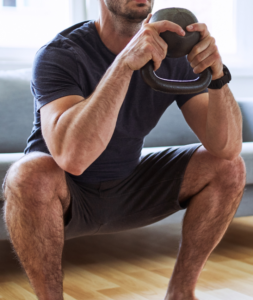the goblet squat can transform your workout. here’s how to do it
Share:

The goblet squat is a highly effective lower body exercise that targets the quadriceps, hamstrings, glutes, and core muscles. It is a versatile and beginner-friendly squat variation that also helps improve mobility, balance, and overall lower body strength. It can fix form issues that show in other squat variations. And the position of the weight adds a challenge to the core that no other squat can match up with.
Let’s get straight to the point, with a quick checklist to ensure proper execution followed by a list of highlight common mistakes and how to avoid them.


